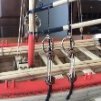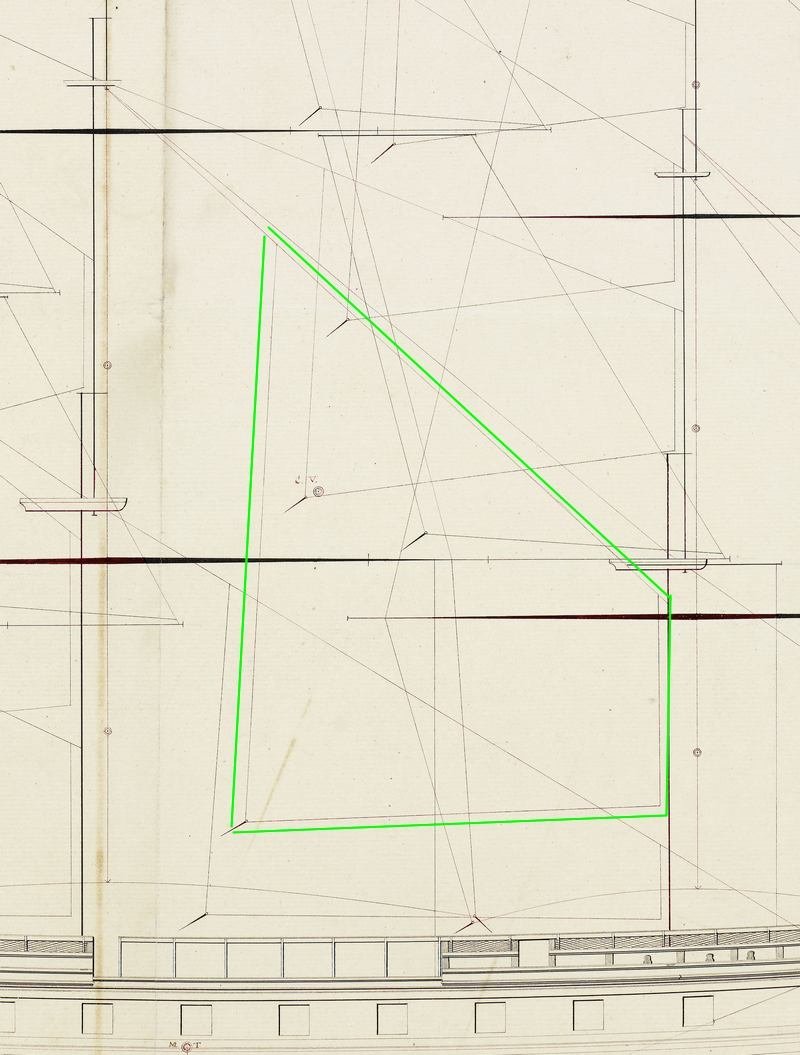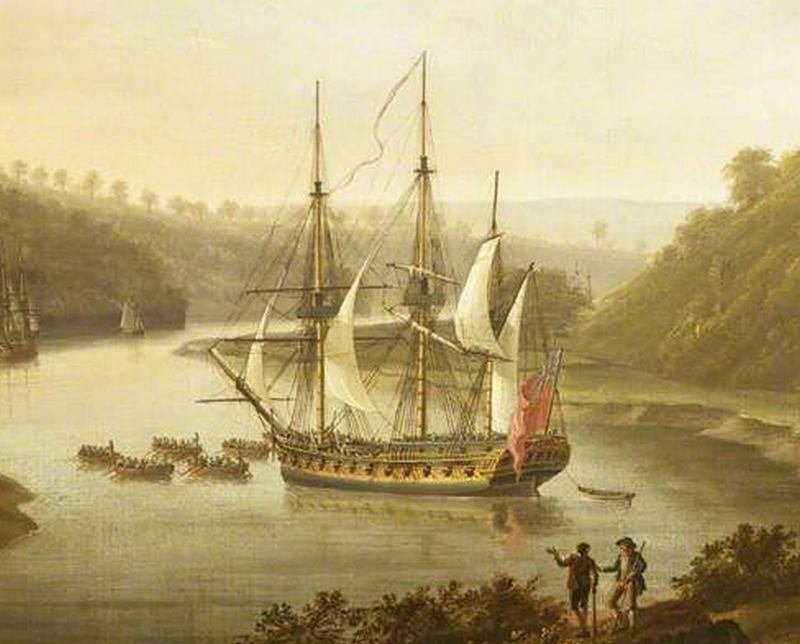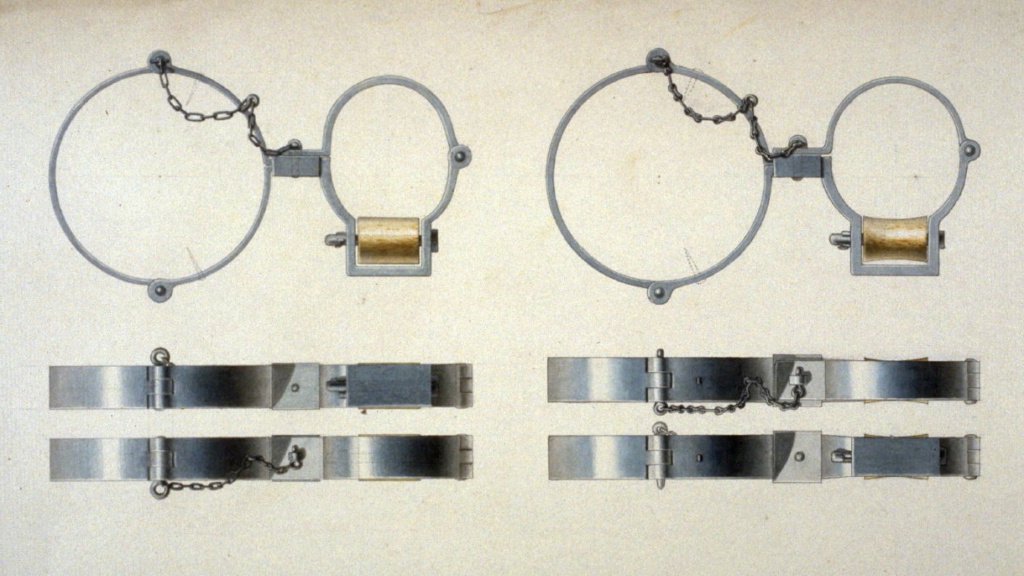-
Posts
170 -
Joined
-
Last visited
Contact Methods
-
Website URL
http://www.gerard-delacroix.fr/
Profile Information
-
Gender
Not Telling
-
Location
Toulouse - France
-
 mtaylor reacted to a post in a topic:
Age of Sail 2 - 3d ship models for PC wargame
mtaylor reacted to a post in a topic:
Age of Sail 2 - 3d ship models for PC wargame
-
 Martes reacted to a post in a topic:
Age of Sail 2 - 3d ship models for PC wargame
Martes reacted to a post in a topic:
Age of Sail 2 - 3d ship models for PC wargame
-
Hello, The recommendations of captains upon returning from campaigns were normally followed if they did not entail excessive expenses. For a false keel 11 cm thick (the ship is small), it is within the realm of possibility. Real anti-drift keels did not appear until the end of the 18th century. The experience acquired on one construction must logically appear on subsequent constructions but, at the time, ships were built by several different builders and each applied their own experience. The false keel is a minor part which often appears as natural in the construction of the hull even if it is not mentioned in the specifications. GD
-
 mtaylor reacted to a post in a topic:
Age of Sail 2 - 3d ship models for PC wargame
mtaylor reacted to a post in a topic:
Age of Sail 2 - 3d ship models for PC wargame
-
 Martes reacted to a post in a topic:
Age of Sail 2 - 3d ship models for PC wargame
Martes reacted to a post in a topic:
Age of Sail 2 - 3d ship models for PC wargame
-
Hello The false keel is used to preserve the keel and to prevent a little the leeway (the drift). On French ships, it is generally only 4 to 5 inches (French) thick, or approximately 11/14 cm. This value does not affect the draft value significantly. On the other hand, its protective role is very important. However, you should know that not all ships have a false keel. In the report published at the end of the monograph, there is no mention of gripe, it does not exist in the French navy. The text cites an iron stirrup intended to prevent the rudder from being engaged by an anchor cable. We can also observe this stirrup on the plans of the monograph. GD
-
 G. Delacroix reacted to a post in a topic:
LˇAmarante by marsalv - 1:36 - POF
G. Delacroix reacted to a post in a topic:
LˇAmarante by marsalv - 1:36 - POF
-
 G. Delacroix reacted to a post in a topic:
La Créole 1827 by archjofo - Scale 1/48 - French corvette
G. Delacroix reacted to a post in a topic:
La Créole 1827 by archjofo - Scale 1/48 - French corvette
-
 G. Delacroix reacted to a post in a topic:
La Créole 1827 by archjofo - Scale 1/48 - French corvette
G. Delacroix reacted to a post in a topic:
La Créole 1827 by archjofo - Scale 1/48 - French corvette
-
 G. Delacroix reacted to a post in a topic:
Le Rochefort by No Idea - 1/24th Scale - First POF Build
G. Delacroix reacted to a post in a topic:
Le Rochefort by No Idea - 1/24th Scale - First POF Build
-
 G. Delacroix reacted to a post in a topic:
Le Rochefort by No Idea - 1/24th Scale - First POF Build
G. Delacroix reacted to a post in a topic:
Le Rochefort by No Idea - 1/24th Scale - First POF Build
-
 G. Delacroix reacted to a post in a topic:
L'egyptienne 1799 by Vladimir_Wairoa - 1:48 - POB
G. Delacroix reacted to a post in a topic:
L'egyptienne 1799 by Vladimir_Wairoa - 1:48 - POB
-
 G. Delacroix reacted to a post in a topic:
Le Rochefort by No Idea - 1/24th Scale - First POF Build
G. Delacroix reacted to a post in a topic:
Le Rochefort by No Idea - 1/24th Scale - First POF Build
-
 G. Delacroix reacted to a post in a topic:
Le Rochefort by No Idea - 1/24th Scale - First POF Build
G. Delacroix reacted to a post in a topic:
Le Rochefort by No Idea - 1/24th Scale - First POF Build
-
 G. Delacroix reacted to a post in a topic:
Le Rochefort by No Idea - 1/24th Scale - First POF Build
G. Delacroix reacted to a post in a topic:
Le Rochefort by No Idea - 1/24th Scale - First POF Build
-
 G. Delacroix reacted to a post in a topic:
Le Rochefort by No Idea - 1/24th Scale - First POF Build
G. Delacroix reacted to a post in a topic:
Le Rochefort by No Idea - 1/24th Scale - First POF Build
-
 Mike Y reacted to a post in a topic:
Le Rochefort by No Idea - 1/24th Scale - First POF Build
Mike Y reacted to a post in a topic:
Le Rochefort by No Idea - 1/24th Scale - First POF Build
-
 No Idea reacted to a post in a topic:
Le Rochefort by No Idea - 1/24th Scale - First POF Build
No Idea reacted to a post in a topic:
Le Rochefort by No Idea - 1/24th Scale - First POF Build
-
 mtaylor reacted to a post in a topic:
Le Rochefort by No Idea - 1/24th Scale - First POF Build
mtaylor reacted to a post in a topic:
Le Rochefort by No Idea - 1/24th Scale - First POF Build
-
Hello, The monograph of "L'Invention" has only been published for 6 months, there is still no model to my knowledge. The prototype models which are detailed in photos in my monographs are of course finished after publication. But, for "L'Invention" and "L'Egyptienne", there is no prototype model. The model by Greg will therefore be the first whose construction will be published. For "L'Egyptienne", there are several models under construction by members of my forum, including this one made with great talent: https://5500.forumactif.org/t3726-l-egyptienne-au-1-48-mes-debuts-en-arsenal GD
-
I'm even certain of it, the basic thread of the ropes, that is to say the rope yarn, is soaked in hot vegetable tar before being worked into larger diameters. This is the basis of tarred ropes. I only indicated that the standing rigging was tarred occasionally, never the running rigging. This is the reason for its lighter shade in addition to wear. The color is a rather dark reddish-brown without being black. In the 1850s, lampblack was added to make vegetable tar darker. It is in these years that we will begin to use mineral tar, coal tar and later petroleum tar. The strops are part of the standing rigging, they had to be tarred from time to time.
-
Hello, I just want to specify that all the ropes are tarred, I mean all of them. Running rigging becomes slightly lighter as it is maneuvered, wears down, and especially as it passes through the pulleys. The standing rigging remains dark especially as it is re-tarred from time to time without any wear. GD
-
Hello, Very good choice, I can't wait to discover this yard that is, for the moment, unpublished. All my encouragement goes with you GD
-
Hello, Congratulations on obtaining these awards, they demonstrate the quality of your model's execution as well as the application and value of your work. For your next model, I take the liberty of recommending L'Invention, which will be much simpler than L'Egyptienne. This beautiful frigate is truly a big ship with all the complexity of the work of carpentry, artillery and decoration that this implies. The Invention is structurally simpler without being easy but, to my taste, it has the advantage of novelty both in the world of model making and in the innovations it brings for the time of its construction. Moreover, it is an opening towards the clippers which will succeed it fifty years later. Whatever you decide, I have no doubt that your project will succeed. And thank you for the citation and the compliments. GD
-

La Palme by Tobias - 1:36 - POF
G. Delacroix replied to Tobias's topic in - Build logs for subjects built 1501 - 1750
Hello, In English "canal des anguillers" can be translated by: limber-holes. GD -
Jeronimo started following G. Delacroix
-
Your example shows a triangular shape that indeed existed. For the period concerned (end of the 18th century), the size of the sail surprisingly increased until arriving at that which is illustrated in the drawing just above.. Towards the first third of the 19th century, it will return to a more reasonable size. Here is an extract of the sail plan of a corvette, we can see the large surface of this sail. GD
-
This is the main topmast staysail, quite common at the end of the 18th century. More visible here: GD
-
garyshipwright started following G. Delacroix
-
Hello, Concerning the height of Le Mercure deck under the forecastle, I checked in the monograph and, measured on the plan, it is 5 feet 1 inches (0.325 m French feet) from plank to plank. This gives a height of 1.68 m. In his "Traité de Construction" dated circa 1730, the period that interests us, Blaise Ollivier gives, for merchant ships, a height of "4 feet to 4 feet 10 inches / 5 feet above the deck" (still French feet). And this height is also present in the description of small frigates. Jean Boudriot therefore applied the current practices at that time to make his drawings. Often, information from the past surprises us and we tend to think of an error. By cross-checking the data, we realize that this is not the case and above all that our mind is not adapted to the criteria of the time. I think you have been badly advised because there is documentation on the frigates of the time much more suitable than Le Mercure for your reconstitution. Sorry Johannes for this drift of the subject. GD
About us
Modelshipworld - Advancing Ship Modeling through Research
SSL Secured
Your security is important for us so this Website is SSL-Secured
NRG Mailing Address
Nautical Research Guild
237 South Lincoln Street
Westmont IL, 60559-1917
Model Ship World ® and the MSW logo are Registered Trademarks, and belong to the Nautical Research Guild (United States Patent and Trademark Office: No. 6,929,264 & No. 6,929,274, registered Dec. 20, 2022)
Helpful Links
About the NRG
If you enjoy building ship models that are historically accurate as well as beautiful, then The Nautical Research Guild (NRG) is just right for you.
The Guild is a non-profit educational organization whose mission is to “Advance Ship Modeling Through Research”. We provide support to our members in their efforts to raise the quality of their model ships.
The Nautical Research Guild has published our world-renowned quarterly magazine, The Nautical Research Journal, since 1955. The pages of the Journal are full of articles by accomplished ship modelers who show you how they create those exquisite details on their models, and by maritime historians who show you the correct details to build. The Journal is available in both print and digital editions. Go to the NRG web site (www.thenrg.org) to download a complimentary digital copy of the Journal. The NRG also publishes plan sets, books and compilations of back issues of the Journal and the former Ships in Scale and Model Ship Builder magazines.


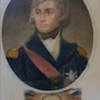


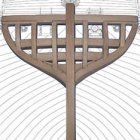
.thumb.jpeg.fc5d633a7b34428fcf19419a73d56d55.jpeg)



